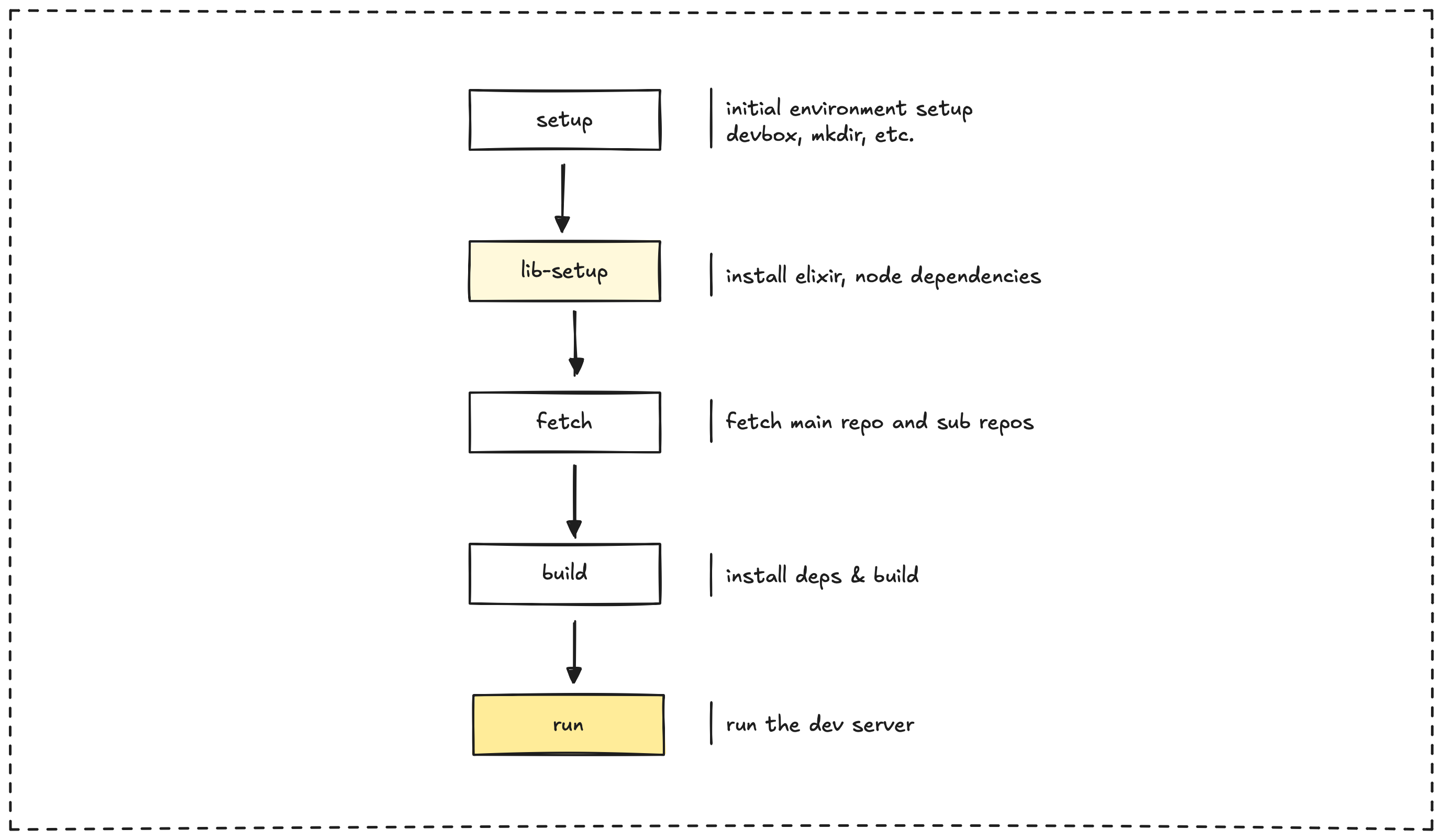The Memo project incorporates multiple technologies, including Elixir, Node.js, and shell scripts. This diversity could pose a challenge for new team members trying to set up the development environment. To address this and accelerate the development process, we utilize a single Makefile.
This Makefile standardizes our toolchain and orchestrates various aspects of building, running, and exporting data.

Common development tasks
The Makefile provides a set of key commands to streamline common development tasks:
| Command | Description | Implementation |
|---|---|---|
| make setup | Initializes the environment. | Installs Devbox and creates the content directory. |
| make lib-setup | Installs Elixir dependencies. | Runs Hex and Rebar setup, then fetches dependencies. |
| make fetch | Fetches content repositories. | Executes the Elixir fetch process and the git-fetch.sh script. |
| make build | Builds the entire application. | Installs dependencies, exports markdown, and builds the Next.js application. |
| make run | Runs the development server. | Exports markdown, generates indexes, and starts the Next.js development server. |
| make duckdb-export | Exports data to DuckDB. | Removes the old database file and runs the DuckDB export process. |
Project structure
The development environment primarily interacts with these key elements:
- content/: This directory holds our markdown files and is ignored in Git.
- lib/obsidian-compiler/: Contains the Elixir code responsible for processing Obsidian markdown.
- Next.js Application: This is the web application that displays our content.
- vault.duckdb: The database file used for storing our processed content.
Working with the development environment
To work effectively with the Dwarves Memo system development environment, follow these steps:
- Start a Devbox shell using the devbox shell command. This command automatically runs the necessary initialization hooks.
- Make your desired changes to the content or code.
- Use make run to test your changes locally with the development server.
- If you need to create a production-ready build, use make build.
- Whenever you add new content, use make duckdb-export to process it into the database.
For typical content development, you will:
- Edit your Markdown content within the content/ directory.
- Run make run to instantly preview your changes in the local development server.
- If you are adding new features to the export pipeline, modify the relevant files in the lib/obsidian-compiler/ directory.
- For changes to the web interface, work directly with the Next.js application code.
Next: Static site by choice
